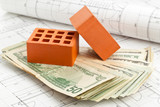This comprehensive guide to construction Change Order pricing for the Owner will help to ensure an Owner gets all the information they should know before they open their checkbooks to cover added costs in a construction project.
The provisions included in this Guide will generally apply to ALL TYPES of contracts and/or subcontracts.
 Let’s face it, in a perfect world, the typical construction project would be meticulously planned, budgeted, bid, built and turned over without any issues along the way resulting in additional cost.
Let’s face it, in a perfect world, the typical construction project would be meticulously planned, budgeted, bid, built and turned over without any issues along the way resulting in additional cost.
In reality, delays, material cost increases, owner desired revisions, labor increases, building code changes, unknown conditions are all going to affect your bottom line and may impact the terms and conditions of your initial Agreement.
A written change order captures these conditions, increasing or decreasing the value of your original Agreement in a legally binding document.
When change order proposals, adjusting the contract price become necessary, the Owner or Construction Manager will have the right to select the method of pricing to be used by the Trade Contractor or sub-tiers in accordance with the pricing provisions similar to those outlined in this Change Order Guide.
Here’s what you should know:
Say “NO” to Lump Sum Change Order Proposals
 To accept a “Lump Sum” change proposal from any prime contractor, subcontractor, or sub-subcontractor means you can’t see what you are being charged. Accepting a lump sum change proposal opens the door to hidden costs/fees and become a potential opportunity for the trade contract to make more money, that might otherwise not be allowed in the original executed Agreement.
To accept a “Lump Sum” change proposal from any prime contractor, subcontractor, or sub-subcontractor means you can’t see what you are being charged. Accepting a lump sum change proposal opens the door to hidden costs/fees and become a potential opportunity for the trade contract to make more money, that might otherwise not be allowed in the original executed Agreement.
Trade Contractors should submit a detailed, itemized Change Order Proposal (CPO) that covers additional work and/or deleted work originating through Architects or Engineers Supplemental Instructions (ASI or ESI), field directives and Owner or Consultant Construction Change Directives (CCD).
The Trade Contractor proposal should be itemized for the various scopes of work and separated by labor, material, and equipment in a detailed format as directed by the Owner or Construction Manager.
The Owner and/or Construction Manager should require itemized changes on all change order proposals from the primary trade contractor, subcontractors, and sub-subcontractors regardless of tier.
“Itemized” means that the details to be submitted will include line item estimates showing complete material quantity take-offs, material unit prices by item and related labor manhour pricing information with extensions by line item as referenced in the change directive.
Labor Unit Costs and Labor Burden
 The Trade Contractor labor costs, to be included for self-performed work, should be based on the actual cost per hour, including fringe benefits, insurance, taxes and subsistence (if applicable) that is paid by the Trade Contractor to the workers who the Trade Contractor reasonably anticipates will perform the change order work. Rates will be based off approved and current Trade Labor Rate Schedules provided by the Trade Contractor to the Owner or Construction Manager at time of contract award.
The Trade Contractor labor costs, to be included for self-performed work, should be based on the actual cost per hour, including fringe benefits, insurance, taxes and subsistence (if applicable) that is paid by the Trade Contractor to the workers who the Trade Contractor reasonably anticipates will perform the change order work. Rates will be based off approved and current Trade Labor Rate Schedules provided by the Trade Contractor to the Owner or Construction Manager at time of contract award.
Labor hours shall include only those for the workmen and working foremen directly involved in performing the change order work.
Supervision above the level of working foremen (such as general superintendent, general foreman, superintendent, project manager, safety, QC, etc.) is generally understood to be included within the contract allowed Markup Percentages. Most times the markup percentage is 15% for overhead and profit.
Labor burden included in change order pricing will be defined as the employer’s actual cost of payroll taxes (FICA, Medicare, SUTA, FUTA), actual cost for the employer’s rate for union benefits (or other fringe benefits if the employees are not union employees), plus the actual cost to employer for worker’s compensation insurance.
The percentage used for labor burden to price change orders may be examined after project completion, and at the sole discretion of the owner or Construction Manager. An adjustment to any approved change orders may be processed if it is determined that the actual labor burden percentage should have been more or less than the estimated percentage used.
Change Order Material/Equipment Pricing
 Material Pricing — Estimating any material costs for the change order should reflect the Trade Contractor actual cost for the purchase of the material needed for the change order work.
Material Pricing — Estimating any material costs for the change order should reflect the Trade Contractor actual cost for the purchase of the material needed for the change order work.
Any material costs should reflect cost reductions that may be available to the Trade Contractor through trade discounts and/or volume rebates. “Cash” discounts (i.e. prompt payment discounts of 2% or less) available on material purchases for change order work shall be credited to the Owner and/or Construction Manager if the Trade Contractor is provided Owner funds in time for Contractor to take advantage of any such “cash” discounts. Price quotations from material vendors and suppliers must be itemized with unit prices for each specific item to be purchased. Lump sum pricing should not be considered.
 Equipment Pricing — Change order estimated costs may include pricing for rental of major equipment specifically needed to perform the change order work.
Equipment Pricing — Change order estimated costs may include pricing for rental of major equipment specifically needed to perform the change order work.
For Trade Contractor owned equipment, the equipment rental rates allowed to be used for pricing change order proposals could generally be 75% of the monthly rate listed in the most current publication of The AED Green Book divided by 176 to arrive at a maximum hourly rate to be applied to the hours the equipment is used performing the change order work or by such approved rental rates as provided by the Trade Contractor at contract award.
For Trade Contractor owned equipment, the total equipment rental charges for any single piece of equipment used in all change order work shall be limited to 50% of the fair market value of the piece of equipment when the first change order is priced involving usage of the piece of equipment.
The fuel necessary to operate the owned equipment will be considered as a separate direct cost associated with the change order work.
Change Order Markup – Self-Performed Work
When pricing change orders, the maximum Markup Percentage Fee to be paid to any Traded Contractor (regardless of tier) on self-performed work may be a single markup percentage similar to a not-to-exceed ten percent (10%) markup of the net direct cost of (1) direct labor and allowable labor burden costs applicable to the change order or extra work; (2) the net cost of material and installed equipment incorporated into the change or extra work, and (3) net rental cost of major equipment and related fuel costs necessary to complete the change in the Work.
The above markup percentage generally be considered to cover applicable overhead costs directly attributable to the field overhead costs related to processing, supervising and performing, the change order work as well as to cover home office overhead costs and profit.
Change Order Mark-up – Lower Tier Trade Partners
For change order proposals involving work performed by lower tier sub-contractors, the maximum Markup Percentage Fee allowable to the Contractor supervising the lower tier contractor’s work might not exceed five percent (5%) of the net of all approved change order work performed by all subcontractors combined for any change order proposal. The maximum allowable markup per change order is generally an industry standard fifteen percent (15%).
Mark-up of Change Order Direct and Indirect Costs
 The industry standard maximum markup fee of fifteen percent (15%) is intended to cover the Trade Contractor’s profit and all indirect costs associated with the change order work.
The industry standard maximum markup fee of fifteen percent (15%) is intended to cover the Trade Contractor’s profit and all indirect costs associated with the change order work.
This markup includes, but is not limited to home office expenses, branch office and field office overhead expenses of any kind; project management; superintendents, general foremen; estimating, engineering; coordinating; expediting; purchasing; detailing; legal, accounting, data processing or other administrative expenses; shop drawings; permits; auto insurance and umbrella insurance; pick-up truck costs; and warranty expense costs.
The cost for the use of small tools is also to be considered covered by the fifteen percent (15%) maximum markup.
Small tools are typically defined as tools and equipment (power or non-power) with an individual purchase cost of less than $600.
Deductive Change Orders to Owner
On occasions where some scope of work is eliminated from a project resulting in a deductive change order, the markup percentage referenced in the preceding paragraphs will generally apply to both additive and deductive change orders.
A deductive change order should be calculated in the same manner as an additive change order. In those instances where a change involves both additive and deductive work, the additions and deductions will be netted, and the markup percentage adjustments will then be applied to the net amount.
Pricing Contingency in Change Orders
Lump sum or percentage amounts for “contingency” added as a separate line item in change order estimates is not advised. Unknowns attributable to labor hours should be accounted for when estimating the labor hours anticipated for performing the work. Unknowns must also be factored into estimates of material costs.
Time and Change Directives
A Trade Contractor proposal for changes to the contract amount or for time should be submitted within a defined number of calendar days by the Owner or Construction Manager as an item critical to schedule management and extended General Conditions costs.
 If change proposals are not received in a timely manner, are not in an acceptable format to the Owner or Construction Manager, or if the changed work should be started immediately to avoid damage to the project or costly schedule delay; the Owner or Construction Manager may direct the Trade Contractor to proceed with the changes without waiting for the Contractor’s proposal or for the formal change order to be issued if the original executed Agreement allows.
If change proposals are not received in a timely manner, are not in an acceptable format to the Owner or Construction Manager, or if the changed work should be started immediately to avoid damage to the project or costly schedule delay; the Owner or Construction Manager may direct the Trade Contractor to proceed with the changes without waiting for the Contractor’s proposal or for the formal change order to be issued if the original executed Agreement allows.
In the instance of unacceptable Trade Contractor change proposals, the Owner or Construction Manager could direct the Trade Contractor to proceed with the changed work on a cost-plus basis with an agreed upon “not-to-exceed” price for the work to be performed.
Such direction to the Trade Contractor by the Owner or Construction Manager should be confirmed in writing within a specified number of calendar days or such other time as determined by the Owner or Construction Manager. The cost, credit, and or time extensions should be determined by negotiation and then incorporated in a formal Change Order.
Change Order to Owner Pricing Validation
 Trade Contractors, subcontractors and sub-subcontractors should agree that any designated Owner representative will have the right to examine (copy or scan) the records of the Trade Contractor, subcontractor or sub-sub contractor’s records to verify the accuracy and appropriateness of the pricing data used to price all change order proposals and/or claims.
Trade Contractors, subcontractors and sub-subcontractors should agree that any designated Owner representative will have the right to examine (copy or scan) the records of the Trade Contractor, subcontractor or sub-sub contractor’s records to verify the accuracy and appropriateness of the pricing data used to price all change order proposals and/or claims.
The Trade Contractor should further agree that if the Owner or Construction Manager determines that the cost and pricing data submitted was inaccurate, incomplete, or not in compliance with the terms of the original executed Agreement regarding pricing of change orders, an appropriate price adjustment will be made.
Any post-approval Agreement price adjustments should apply to all levels of contractors and/or subcontractors and to all types of change order proposals.
Owner Change Order Pricing Breakdown
Trade Contractors should agree to provide and require all Subcontractors and sub-subcontractors to provide a breakdown of allowable labor and labor burden cost information as outlined above in this Owner Construction Change Order Guide to permit the Owner optimal cost management.
This information could be used by the Owner, to evaluate the potential cost of materials, labor and labor burden related to future change order work.
The information provided is intended to represent an accurate estimate of Trade Contractor actual labor and labor burden cost components and as well as material costs.
The accuracy of any accepted labor cost components used to price change orders may be subject to later audit as determined by the Owner or Construction Manager and generally outlined in the Terms and Conditions of the executed Agreement.
Filed under: Cost Estimating





